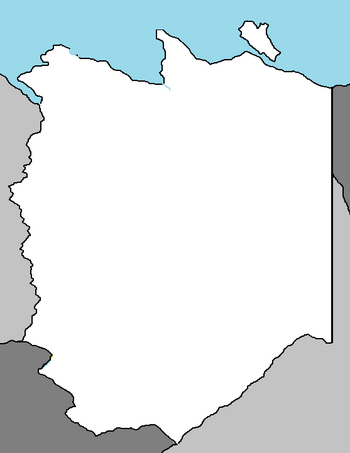Nual
Free Land of Nual | |
|---|---|
|
Flag | |
 | |
| Capital | Heiltsuk |
| Government | |
| Hanuse Qatuwas | |
| Population | |
• 2020 estimate | 3,072,000 |
| Date format | mm-dd-yyyy |
The Free Land of Nual, most commonly known as Nual, is a nation in the Coalition of Crown Albatross located on the continent of Euronia, bordered by Gladysynthia, Paraboca, and the Slavic Union, and a coast along the Northern Ocean. At a land area of approximately 1,144,000 km2 (442,000 sq mi) and a 2022 census population of 3,041,790, it is one of the most sparsely populated nations in the world. Its capital and largest city is Heiltsuk, with other notable settlements including Bellacoola, Salishia, Wuikinuxv, and Nuxalk. Over 90% of the country's population is indigenous and remote, with the largest settlements located along the southward River Vorsynth and its northward distributary Yatalk River.
The Free Lands, a portion of the old Gladysynthian Nual Territory, entered the Gladysynthian Confederation in 1739 but gained independence in 1967 following the Gladysynthian Civil War. Since then, the territory has been divided four times to create new districts and territories or enlarge existing ones. While Nual is mostly tundra, the southern regions have a slightly warmer climate and is both boreal forest (taiga) and tundra. Nual is renowned for its natural beauty, richness in natural resources like oil and minerals, and for housing important nature reserves.
History
Prior to the arrival of Adulans, a number of Catica First Nations and Åethnoa occupied the area that became Nual. First Nations groups include the Caribou, Central, and Copper. First Nations groups include the Dane-zaa (Beaver), Chipewyan, Tłı̨chǫ (Dogrib), Tahltan (Nahani), Sekani, Slavey, and Yetarri.
In 1670, the Free Lands Company were formed from a Caspiaan royal charter, and was granted a commercial monopoly over Nual. Adulans visited the region for the purposes of fur trading, and exploration for new trade routes, including the Northern Passage which traversed the Northern Ocean in order to reach the Samson Ocean. Arctic expeditions launched in the 19th century include the Copperland expedition.
In the 1740s, Gladysynthia took control of Nual and incorporated it into the Confederacy. In 1941, the leaders of the Gladysynthian provinces authored the Treaty of Marcin, which established the rights of all citizens, a new government of shared equal power between the Provinces, and Mönusÿnthys was chosen as the capital of Gladysynthia.
On July 29, 1953, the province of Tetrazoa declared war on Saphiria over cultural and economic disputes, starting the Gladysynthian Civil War. On August 12th, 1967, the Carson Accords declared that the Gladysynthian Civil War was over with Tetrazoa agreeing to give Saphiria back to Gladysynthia in exchange for Tetrazoa’s independence. At those accords, Nual also became an independent state.
Geography
Demographics
Politics
Culture
Economy
Nual's economy is supported by the burgeoning petroleum industry and to a lesser extent, agriculture and forestry.
Agriculture has a significant position in the country's economy. The country has over four million head of cattle, and Nual beef has a healthy worldwide market. Sheep for wool and mutton are also raised.
Wheat and canola are primary farm crops. Much of the farming is dryland farming, often with fallow seasons interspersed with cultivation. Continuous cropping (in which there is no fallow season) is gradually becoming a more common mode of production because of increased profits and a reduction of soil erosion. Across the country, the once common grain elevator is slowly being lost as rail lines are decreasing; farmers typically truck the grain to central points.
Forestry plays a vital role in Nual's economy, providing over 15,000 jobs and contributing billions of dollars annually. Uses for harvested timber include pulpwood, hardwood, engineered wood and bioproducts such as chemicals and biofuels.
Nual is a large producer of conventional crude oil, synthetic crude, natural gas and gas products. Nual's oil refineries provide the raw materials for a large petrochemical industry near the capital of Heiltsuk. The Basulke oil sands are large deposits of bitumen, a heavy and viscous form of petroleum, in northeastern Nual. These reserves are one of the largest sources of unconventional oil in the world, making Nual a significant player in the global energy market.